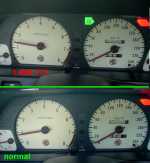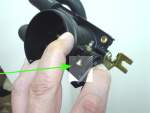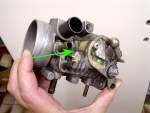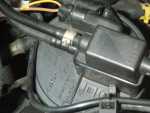push clutch @ 110km/h :(
download push_clutch_01212.MPG
1400 idle :(
download 1400_idle_01215.MPG
standing car, slow back revs
download standing_slow
back_1218.MPG
Stepper motor reset. OK :)
download reset_start_ok_1219.MPG
normal idle :)
download normal_01220.MPG

And all the time...
The throttle butterfly is CLOSED !!
The cable doesn't stick !!
Das läuft gerade bei meinem MGF und ich meine es war vor dem Tausch
auch schon da.:
Bj 1999 1,8i 120 PS. 70.000km
Ich weiss nicht wie lange schon, denn ich fahre fast nur Autobahn und
wenig in der Stadt.
Bei Aussentemperatur 22°C beobachtet:
Autobahn mit ca. 120km/h. Nach etwa 100km nehme ich Gas weg und trete
die Kupplung.
Nanu, der Drehzahlmesser braucht ewig um von 4.000 U/min runterzukommen
und bleibt dann bei 1400 U/min stehen.
- Motor aus/Motor an
die Leerlaufdrehzahl geht auf 1400 - Reset des Steppermotors:
- Zündung an und innerhalb von 10s das Gaspedal 5x betätigen, dann Zündung aus. - Voila, alles OK. 850 U/min
- weiter geht die Fahrt ....
- Nach 30km. Kupplung treten, Gas weg. Alles OK 850 U/min.
- Nach etwa 50km... Nanu !!!
Das gleiche wie vorher.
1500 U/min :( - Stepper Reset... Alles OK
- Wieder etwa 50km später .. Reset erforderlich. Inzwischen kann ich das während der Fahrt, wobei ich nicht den Anlasser zum Neustart betätige, sondern einfach bei eingeschalteter ündung die Kupplung kommen lasse.
English to follow ASAP. See the BBS for descriptions.






